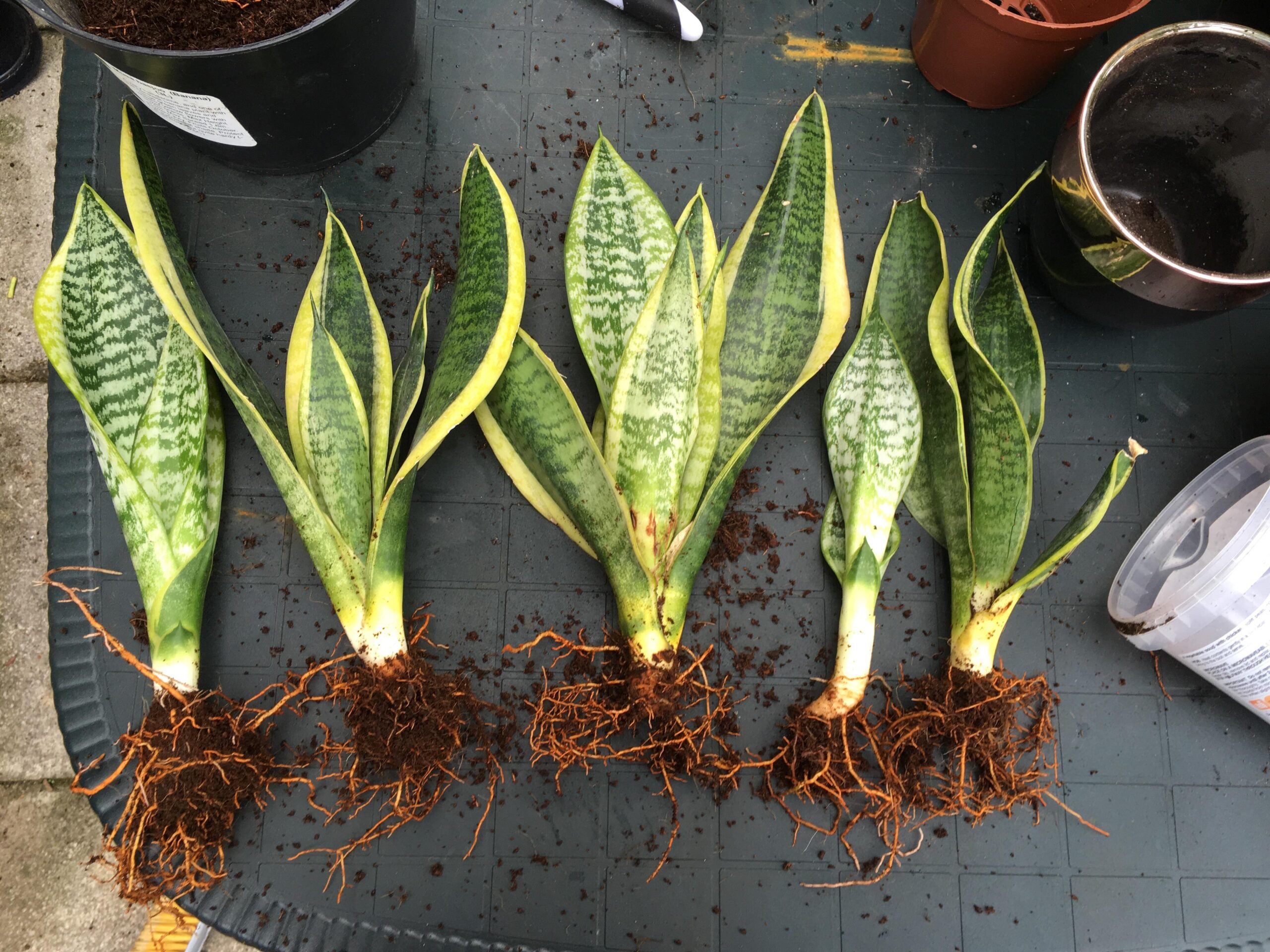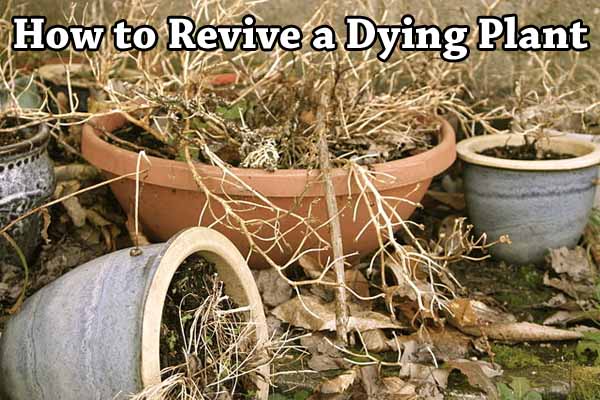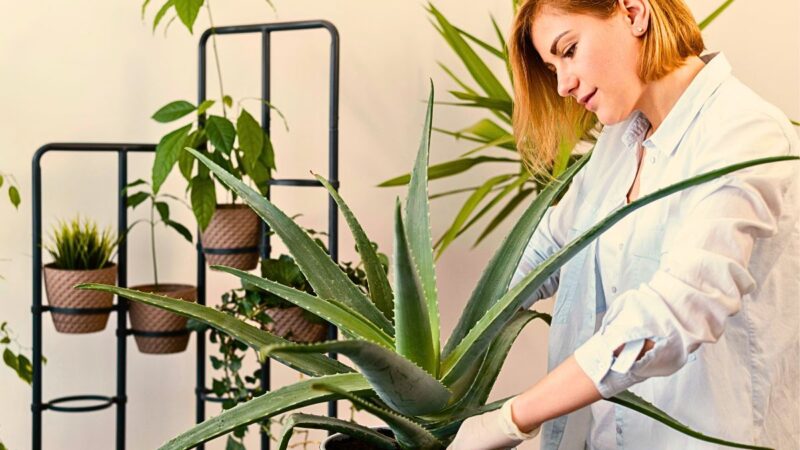Step By Step Instructions to Save your Snake Plant from Root Rot

So, you know those plants are called snake plants, right? They used to be called Sansevierias, but now they’re called Dracaena. But some people still call them Sansevierias, so we might use both names.
Sometimes, these plants can get a bad sickness called root rot. It’s like a big boo-boo on the plant’s roots and can make it very sick or even die. But if your Snake Plant gets root rot, don’t worry! There are things you can do to help it feel better.
First, you need to remove the plant from the soil and examine its roots. If the roots are squishy, slimy, or stinky, you must cut them off with clean scissors. Then, you can put your plant in a new, clean pot with fresh soil.
In the future, you can help prevent root rot by not watering your plant too much. If the soil on the top of the pot is still wet, you should wait to water it. You can also use a special soil that won’t hold onto too much water.
If you want to learn more about how to care for a Snake Plant with root rot, read our article.
Why is Your Snake Plant Rotting?
Have you ever heard of something called “root rot”? It’s a bad thing that can happen to your Snake Plant when the soil in its pot gets too wet for too long. See, just like you need air to breathe, your plant’s roots also need oxygen. If the soil is too wet, it can cut off the air supply to the roots, and they get weaker over time.
And if that’s not bad enough, there are some tiny living things like bacteria and fungi that really like to live in damp soil. Normally, they don’t cause much trouble, but if the soil is too wet, they can grow and reproduce quickly. And because the roots are already weak, they can’t fight off all those little living things. They can get inside the roots and start eating away at them from the inside. That’s what we call “root rot”.
It’s bad for your plant and can spread quickly, so you must act fast if you notice it happening. Snake Plants are especially prone to root rot because they can be easy to water too much. Even though they can survive without water for a while, their soil can stay wet longer than expected.
So, it’s essential to be careful and not give your plant too much water. You should also check the roots from time to time to make sure they look healthy. If you see any signs of root rot, like squishy or smelly roots, you’ll need to take action to fix it. With a little bit of extra care, you can keep your Snake Plant healthy and happy.
How to Identify Root Rot in Your Snake Plant
When you have a Snake Plant, it can get sick with something called root rot. But it’s hard to know if it’s happening because the first signs are in the roots, which you can’t see. You will only see that something is wrong with your Snake Plant when its leaves look unhealthy.
When your Snake Plant is sick with root rot, its leaves will look unhealthy too. They will droop, curl up, and change colour. The leaves might turn yellow, especially at the bottom, which might mean you watered it too much. This is similar to what happens to the leaves when the plant is stressed for other reasons.
But it’s hard to tell if your Snake Plant has root rot just by looking at the leaves because the same things can happen when the plant is not watered enough. So, the next thing to do is check the pot’s soil. You need to find out if it’s too wet or too dry.
Using your finger to touch the top of the soil is insufficient to know if your Snake Plant has root rot. There might be water at the bottom of the pot, even if the surface of the soil is dry. So, you need to check the soil all the way down to the bottom of the pot using a special tool called a soil moisture meter. If you don’t have that tool, you can use a wooden chopstick instead. If the soil is still wet, it might mean that your Snake Plant has root rot.
Even though checking the soil can tell you if your Snake Plant has root rot, it’s not always accurate. Sometimes, the rot can continue even if the soil is dry. So, you also need to look for other signs that your plant is sick. Some other things to watch out for are:
- Leaves that are soft and squishy
- Brown spots on the leaves
- Leaves that flop over if they’re usually standing up (but this depends on the type of Snake Plant you have)
- Lots of little bugs called fungus gnats in the pot
- Bad smells coming from the soil.
If your Snake Plant has some of the problems we discussed, it might be sick with root rot. It’s not good to wait until it gets this bad before trying to fix it. You should start doing what we explained earlier as soon as you think your plant might have too much water. Fixing it might be hard for your Snake Plant, but waiting too long could make it die.
Treating Root Rot in a Snake Plant
I’m sorry to say this, but if any part of your Snake Plant has already started rotting, it’s too late to save it. You can’t make the disease go away. You can only cut off the rotting part and hope the rest of the plant can grow back to what it lost. Here’s what you can do:
Step 1: Get Your Tools Ready
To fix your sick Snake Plant, you need to be prepared and have all the necessary tools ready. You might not need all of them, but it’s better to have them just in case. Here’s what you need:
- Scissors: If you don’t have plant scissors, you can use a special pair of scissors made for trimming plants or a sharp pair of kitchen scissors.
- Hydrogen peroxide: This disinfectant is recommended for cleaning scissors between cuts. You can also use rubbing alcohol or a 10% bleach solution, but hydrogen peroxide is recommended. You can also use it to rinse the roots.
- A clean cloth: You will use this to apply the disinfectant to your scissors.
- Soap: You need to choose a mild soap that doesn’t have harsh chemicals like degreasers.
- Potting mix: After the treatment, you must replace the soil in your pot. You need to use a mix that drains well, and you can learn more about this in our article on Snake Plant soils.
Your Snake Plant may need a new home if the pot it’s currently in is too big for it. If the pot has no holes, it’s even worse. When the soil stays wet, it’s easy for root rot to develop.
If the new pot has holes, water can drain and help keep the soil from getting too wet. Plus, it’s easier for the roots to grow in a smaller pot.
Remember that the Snake Plant’s roots don’t go too deep, so a shallow pot is enough for them.
Step 2: Confirm Your Diagnosis
To check if your Snake Plant has root rot, you need to remove it from its pot and examine the roots. To do this, hold the plant near the base of its leaves and carefully tilt it to slide it out of the pot.
Okay, imagine you have a plant that you want to care for. The part you see above the ground is connected to the soil by the roots, which are hidden underneath. Sometimes, the roots can get dirty, and you need to clean them. To do this, you should gently brush away any dirt or soil that’s covering them.
If they’re still not clean, you can rinse them with water and maybe a little bit of safe soap for plants. Make sure you’re careful when handling the plant and the roots so you don’t accidentally hurt them. Remember, the roots are very important for the plant to grow and be healthy, so we want to keep them safe and healthy, too.
Now that we’ve cleaned the roots, it’s time to ensure they’re healthy. You can do this by gently touching the roots to see if they feel bouncy and strong like a rubber band. They should also be light, like white, tan, or orange. But if the roots feel mushy and soft and look really dark or black, that means they might be sick with something called “root rot.”
This is not good for the plant and can make it very sick. If the roots have root rot, you might also notice a bad smell coming from them. So we need to make sure the roots are healthy, and if they are not, we might need to help the plant get better.
Sometimes, when you look at the roots of a Snake Plant, you might notice that they don’t go very deep into the soil. This is actually okay and normal for these kinds of plants. However, if you look at the roots and they seem small, like hardly any at all, then it might be a sign that the plant is very sick.
This could mean that a bad infection has already damaged the roots and made them disappear. If you notice this, we need to act quickly to save the plant.
If you’re really lucky, you might find that all the plant’s roots are healthy and strong after checking them. That’s great news, and you can move on to the next step! However, if you find any signs of root rot, it’s important to keep going and fix the problem.
We can’t leave any bad roots behind, even if it’s just a tiny bit. Removing all the infected roots is important so that the plant can heal and grow back healthy roots. So, let’s check all the roots carefully and move on to the next step when we’re sure the plant is healthy.
Step 3: Prune Away the Rot
Now, we need to remove the roots that are infected with root rot. This might sound scary, but it’s an important step to help the plant recover. Before you start cutting the roots, make sure to get an adult to help you, and remember to be very careful.
To keep everything clean and safe, take a cloth and dip it in disinfectant to wipe the cutting tool you’re going to use. This will help kill any germs or bacteria that might be on it. Once you’re ready, you can start cutting the bad roots. Just make sure to only cut the parts of the infected roots and be very gentle, so you don’t hurt the healthy roots.
After you’ve cut the infected roots, it’s time to remove all of the bad stuff from the plant. This means we need to eliminate anything that shows signs of root rot. We want to remove every last bit of it so that the plant can start to heal and grow back healthy. If you see any parts of the plant that look brown, black, or mushy, those are the parts we need to get rid of.
This might mean pruning or cutting off some leaves or parts of the stem that are affected. It’s important to be brave and cut off everything bad, even if it looks like a lot. We must do this to give the plant the best chance to survive and grow healthy again.
After each cut you make, it’s really important to remember to clean your cutting tool again. This will help kill any germs or bacteria that might have been on the tool after cutting off the bad parts of the plant. If we don’t clean the cutting tool after each cut, we could accidentally spread the germs to other parts of the plant that are still healthy.
We don’t want that to happen because we want to ensure the plant can recover and grow strong and healthy. So, let’s clean the cutting tool every time we cut.
If we didn’t catch the root rot in time, the infection might have spread throughout the whole root system. This is not good news for the plant, but don’t worry—there’s still a chance to save it! Sansevieria plants are tough and can regrow from just a small piece of a leaf.
If you can find even a tiny piece of the plant that’s still healthy, you can try planting it in fresh soil and see if it can grow back into a new plant. It might take some time, but with patience and care, the plant might be able to recover and grow strong again.
When we’re trying to regrow our Sansevieria plant from a leaf cutting, we need to remember that sometimes the new plant that grows might not look exactly like the parent plant. This means the new plant might not have the same colours or patterns as the original plant.
This could be a bit disappointing, but it’s still better to have a healthy plant that looks a little different than not to have a plant at all! We can still love our new plant just as much, even if it doesn’t look exactly the same as the old one.
Step 4: Disinfect the Root Mass
Remember, it’s really important to be very thorough when treating root rot in our Snake Plant. We need to make sure that we cut off all the infected roots and any parts of the plant that show signs of rot. After we finish trimming the roots, it can be helpful to rinse with hydrogen peroxide.
This will help kill germs or bacteria that might still be hiding in the soil or the plant. We want to make sure that we’re doing everything we can to help our plant recover, so let’s follow all the steps carefully.
To do a hydrogen peroxide rinse for your Snake Plant, you’ll need to mix one part hydrogen peroxide with three parts water. Make sure to use the 3% strength hydrogen peroxide that you might use to clean a scrape or a cut.
Once you’ve mixed the solution, you can dip the remaining healthy roots of your plant into the mixture and hold them there for a few seconds. This will help eliminate any harmful germs or bacteria that might still be on the roots.
If you don’t have any hydrogen peroxide at home, there’s another way to help protect your Snake Plant from harmful fungi. You can use powdered cinnamon instead! Cinnamon is not just a tasty spice; it’s also a natural fungicide, which can help eliminate harmful germs or bacteria on your plant. So, you can dust a bit of cinnamon powder over the remaining roots of your plant. This will help to keep them healthy and strong.
Step 5: Trim the Foliage
This next step is important if you have to remove a lot of roots from your Snake Plant. If you have to remove a third or more of its roots, your plant may not have enough energy to keep all of its leaves healthy.
You’ll need to remove about the same amount of leaves as you took off the roots. This will help your plant balance the amount of leaves it has with the amount of roots it has, allowing it to focus on growing new, healthy roots and leaves.
We’ve already mentioned this, but it’s really important to remember: clean your scissors before cutting any healthy leaves! You don’t want to transfer bacteria from the roots onto the healthy parts of the plant, so clean your scissors well before you start.
Step 6: Replant Your Sansevieria
If you want to use the same pot for your Snake Plant, you need to remove the old soil and clean the inside of the pot with soap and water. After cleaning, you can disinfect it with bleach or rubbing alcohol to kill any remaining bacteria.
Then, fill the pot about three-quarters full with fresh potting soil. This will give your plant a clean and healthy environment to grow.
To replant your Snake Plant, you first need to prepare the pot. If you use the same pot, remove the old soil and clean it with soap and water. You can also disinfect it with bleach or rubbing alcohol. Once the pot is clean, fill it with fresh potting mix that is about three-quarters full.
Then, sprinkle a little bit of water on the soil to make it slightly damp but not too wet. After that, it’s time to plant your Snake Plant by burying the remaining healthy roots. Be gentle, and don’t press the soil too hard. It’s better to shake the pot lightly to let the soil settle around the roots.
If you’re trying to regrow your Snake Plant from a leaf cutting, the process is similar to what we did with the roots. However, this time, you’ll need to bury part of the leaf, too, so it doesn’t fall over. You can follow the same steps to clean your pot and soil, dampen the soil, and bury the cutting, being careful not to pack it down too hard.
Step 7: Nurse Your Snake Plant Back to Health
The steps we discussed can be difficult for your Snake Plant. That’s why you need to be very careful and make it feel as cosy as possible while it recovers.
To help your Snake Plant recover, keep it as comfortable as possible. This means avoiding anything that could stress it out.
Don’t put the plant in direct sunlight for the next few weeks because it might be too much for it right now. Also, don’t give it too much water and don’t use any fertilizer now. Your plant is still recovering and needs to take things slow.
Even if your plant isn’t sick, it can still get stressed when moving it to a new pot or place. This is called transplant shock.
To help your plant feel better after transplanting or repotting, keep it away from direct sunlight for a few weeks, water it sparingly, and not give it any plant food. These things could hurt your plant while it’s trying to adjust to its new home.
PRO TIP: Protect your pets, as snake plants are toxic to cats, dogs, etc.
How to Prevent Root Rot in Snake Plants
Great job! You’ve successfully treated your Snake Plant, and now it’s on the path to improving. But how can you keep your plant from getting root rot again?
Okay, now that your plant is healthy again, let’s discuss how to keep it that way! One thing you can do is to use the right kind of soil.
You don’t want to use soil that holds onto too much water, which can lead to root rot. Instead, use soil with bigger pieces, like chunks of perlite. We have more information on this topic in another article about the best soils for Snake Plants.
Let’s discuss the type of pot you use for your Snake Plant. It’s important to choose a pot with holes at the bottom to let water drain out. Too much water can make the soil too wet and cause root rot.
You can also consider using a pot made of unglazed terra cotta, which allows water to escape through the walls, helping the soil dry out more quickly.
To keep your Snake Plant healthy, you need to be careful about how you water it. Instead of watering it a little daily, you should give it a lot of water all at once, but not too often.
Ensure the soil is completely soaked with water, and then wait until the top part is dry before watering it again. This may take a few days, but that’s okay. If you’re not sure if it’s time to water your Snake Plant, wait a few more days before watering it. Also, it’s important to use a pot with holes in the bottom so that the water can drain out.
Recommendation
A Complete Guide to Snake Plant Care
How To Choose The Best Soil for Snake Plant
Are Snake Plants Really Toxic to Cats?
Snake Plant Flower – How to Get Your Snake Plant To Bloom
How To Propagate Snake Plant – 4 Easy Methods
Final Thoughts
Finding out your Snake Plant has root rot can be scary, but don’t worry! Your plant can still survive and become healthy again. Even if you have to cut off many roots, it can grow back into a healthy plant.
Please remember to follow the steps we’ve given you and take good care of your plant by giving it the right soil, pot, and water. We believe in you and your plant.
Some FAQs
Q1: How do I save my snake plant from root rot?
A1: Start by repotting your plant in a clean, sanitized container, just large enough for the roots, as snake plants prefer a snug pot. Use fresh, fast-draining succulent soil to prevent future rot. If most or all of the roots are affected, recovery is unlikely, and it may be best to dispose of the plant.
Q2: How do I bring my snake plant back to life?
A2: Trim any damaged leaves down to their base and remove excess water from the pot. Let the soil dry out for a few days, or replace it entirely with a new, dry potting mix. Allow the roots to air out completely, which might take up to a week, before resuming a light watering routine.
Q3: How do you save a plant from dying of root rot?
A3: Trim back any dead or rotting roots, cutting above the damaged areas. Let the plant dry out for a few hours to allow the remaining roots to recover and avoid further rot. Then, repot it in fresh, well-draining compost, ensuring the new pot has drainage holes to prevent water from pooling.
Q4: How do I get my snake plant to regrow roots?
A4: Place healthy cuttings in a glass of water, submerging the bottom quarter of each leaf. Set the glass in bright, indirect light and change the water weekly. Roots may take a few weeks to two months to develop. Once roots form, you can transfer the cuttings to the soil.
Q5: Should I water a plant after root rot?
A5: Avoid watering a plant immediately after treating it for root rot. Give the soil at least a week to dry out completely. When you resume watering, use a smaller amount and ensure any excess water can drain freely from the pot.
Q6: How do you tell if a snake plant is dying?
A6: A common sign of distress in a snake plant is brown, crispy patches on the leaves, which can be a sign of too much direct sun. These scorched spots reduce the plant’s ability to photosynthesize and can affect its overall health. Move the plant to a location with bright, indirect light to prevent further damage.






